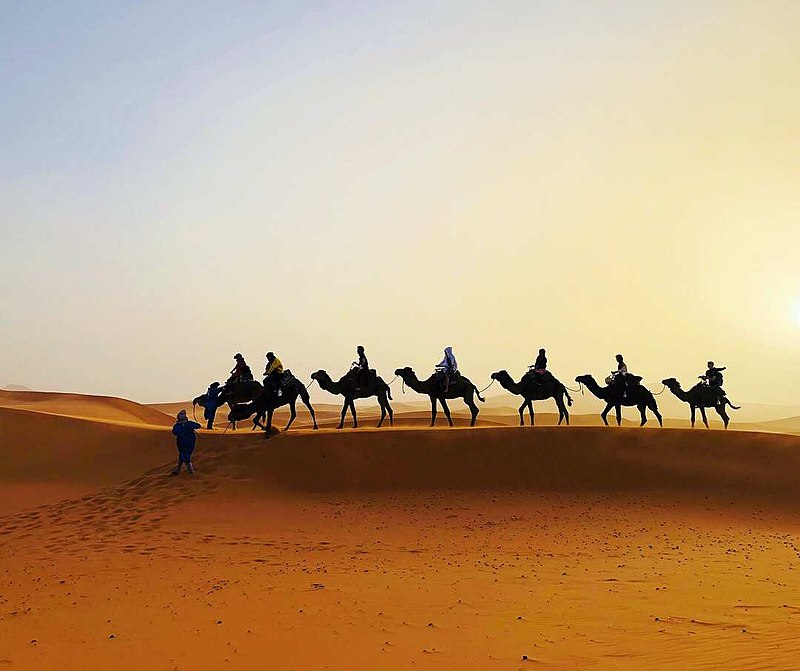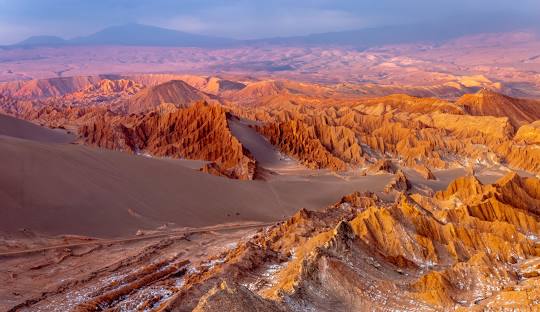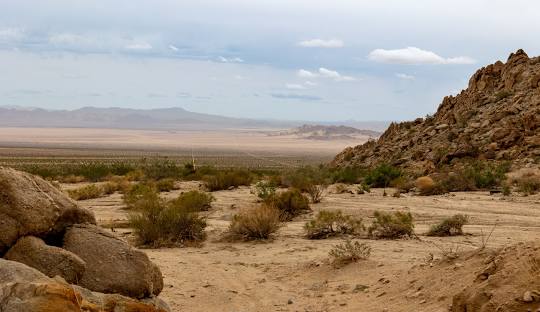Deserts, with their vast and awe-inspiring landscapes, hold a unique allure that captivates the human spirit. From the scorching sands of the Sahara to the surreal beauty of the Atacama, our planet boasts a diverse array of deserts, each with its own distinct characteristics and appeal. In this article, we embark on a fascinating journey to explore the top 15 most famous deserts of the world, delving into their geographical wonders, unique ecosystems, and the cultural significance they hold.
Sahara Desert:
Our journey begins with the grandeur of the Sahara, the world’s largest hot desert, stretching across North Africa. Its endless sea of dunes and rocky plateaus paint a mesmerizing picture. The Sahara’s extreme temperatures and vast expanse make it a captivating landscape, dotted with ancient oases and historic trade routes.

Arabian Desert:
Adjacent to the Red Sea, the Arabian Desert spans several countries in the Middle East, featuring striking sand dunes, rocky mountains, and expansive gravel plains. This desert, rich in cultural history, holds treasures like the Empty Quarter, also known as Rub’ al Khali, one of the largest continuous sand deserts globally.

Gobi Desert:
Venturing into Asia, we encounter the Gobi Desert, a vast expanse covering northern China and southern Mongolia. Its unique blend of sand dunes, rocky mountains, and grasslands make it a captivating desert landscape. The Gobi is also home to rare wildlife, such as the elusive snow leopard and Bactrian camel.
Atacama Desert:
Moving to South America, the Atacama Desert stands as one of the driest places on Earth. Nestled between the Andes Mountains and the Pacific Ocean, its arid landscapes offer a surreal beauty. The Valle de la Luna (Valley of the Moon) showcases otherworldly formations, creating an unparalleled visual spectacle.

Namib Desert:
Venturing to southwestern Africa, the Namib Desert captures attention with its towering red sand dunes, notably at Sossusvlei. The surreal landscapes and the hauntingly beautiful Deadvlei pan make the Namib one of the world’s most photogenic deserts.
Antarctica Desert:
Contrary to popular perception, Antarctica is the world’s largest cold desert, with its icy plains and frozen landscapes. Its extreme conditions and isolation present a unique set of challenges for exploration. The mesmerizing beauty of the Antarctic desert lies in its pristine icebergs, frozen lakes, and wildlife like penguins and seals.
Kalahari Desert:
Spanning Botswana, Namibia, and South Africa, the Kalahari Desert is a vast savannah punctuated by red sand dunes. Contrary to typical desert perceptions, the Kalahari supports diverse flora and fauna, including the iconic African elephant and the elusive black-maned Kalahari lion.

Sonoran Desert:
In North America, the Sonoran Desert spans parts of the United States and Mexico. Renowned for its saguaro cacti, the largest cactus species in the world, this desert boasts unique ecosystems, including the Joshua Tree National Park and the breathtaking Organ Pipe Cactus National Monument.
Mojave Desert:
Adjacent to the Sonoran, the Mojave Desert, primarily in the United States, features Joshua Tree National Park and Death Valley, the lowest point in North America. The Mojave’s stark beauty, characterized by vast salt flats and rugged mountain ranges, paints a captivating portrait of arid landscapes.

Patagonian Desert:
Stretching across Argentina and Chile, the Patagonian Desert, also known as the Patagonian Steppe, presents a unique blend of arid plains and dramatic mountainous terrain. The stunning landscapes of the Los Glaciares National Park and the Torres del Paine National Park make it a must-visit for nature enthusiasts.
Thar Desert:
India and Pakistan share the expansive Thar Desert, a region of shifting sand dunes and arid plains. The desert’s vibrant culture, with traditional music, dance, and colorful attire, adds a unique flavor to its stark landscapes. Ancient forts and temples dot the horizon, telling tales of a rich history.

Great Victoria Desert:
Straddling the border of Western Australia and South Australia, the Great Victoria Desert is the largest desert in Australia. Its remote and untouched landscapes showcase the beauty of the Australian outback, featuring vast sand dunes and sparse vegetation.
Colorado Plateau:
Encompassing parts of the United States, the Colorado Plateau is a unique desert region with striking red rock formations, canyons, and mesas. Iconic landscapes such as the Grand Canyon, Bryce Canyon, and Arches National Park contribute to its status as one of the most famous deserts in North America.
Karakum Desert:
Located in Central Asia, the Karakum Desert spans much of Turkmenistan. With vast sand dunes and rocky plateaus, this desert offers a stark beauty that contrasts with the vibrant cultural heritage of the region. The Darvaza Gas Crater, known as the “Door to Hell,” adds an intriguing element to the desert’s allure.

Taklamakan Desert:
Closing our journey, we arrive at the Taklamakan Desert in northwest China, often referred to as the “Sea of Death.” Surrounded by the Kunlun Mountains and the Pamir Mountains, this vast desert features shifting sand dunes and ancient Silk Road trade routes, echoing tales of a bygone era.
Conclusion:
As we conclude our exploration of the top 15 most famous deserts of the world, we recognize the diverse beauty and significance these arid landscapes hold. From the ancient trade routes of the Sahara to the frozen expanses of Antarctica, each desert tells a unique story shaped by its geography, climate, and the resilient life that adapts to these harsh environments. As we marvel at the breathtaking landscapes and ecosystems, we gain a deeper appreciation for the intricate balance between nature and the human spirit in these remarkable deserts.

